What is the core?
The core is a group of muscles that stabilizes and controls the pelvis and spine which in turn helps the legs and upper body to function correctly. The muscles included are all the abdominals, back muscles, Glutei and pelvic floor muscles.
Core strength is less about power and more about the subtleties of being able to maintain the body in ideal postures — to unload the joints and promote ease of movement. For the average person, this helps them maintain the ability to get on and off the floor, stand up from a chair, sit comfortably at a desk, or do harder chores without pain. It is also essential for good balance, better co-ordination and posture which is essential as we get older.
In athletes, it promotes more efficient movement, therefore preventing injury and improving their performance.
The core also includes the pelvic floor musculature and maintaining core stability can help treat and prevent certain types of incontinence.
Why is core strength important?
As we age, we develop degenerative changes such as wear and tear in the spine. This can lead to back problems which can be controlled and the symptoms largely eliminated with the appropriate core exercises. Scoliosis, or curved spine can also often be controlled with the correct postural exercises. Lack of a balanced core can lead to other problems. Knee pain is often caused by insufficient pelvic stabilization.
Finding the right core strengthening program for you
A good core program relies less on mindless repetition of exercise and focuses more on awareness. People with good core strength learn to identify and activate the muscles needed to accomplish the task. Learning to activate the core requires concentration and leads to being more in tune with the body.
There is no one method of core strengthening that works for everyone. Some people do well with classes (though it can be easy do the repetitions without truly understanding the targeted muscle groups). Others use Pilates or yoga to discover where their core is. Physiotherapists are excellent resources, as they can provide one-on-one instruction and find a method that works for any person with any background at any ability level. It sometimes takes patience for people to “find” their core, but once they do, it can be engaged and activated during any activity — including walking, driving, and sitting. While building the core starts with awareness and control, athletes can further challenge their stability with more complex movements that can be guided by athletic trainers and other fitness specialists.
Daily practice of core engagement can lead to healthier movement patterns that allow for increased mobility and independence throughout the course of our lives.
Below is a list of Core exercises that you can try.
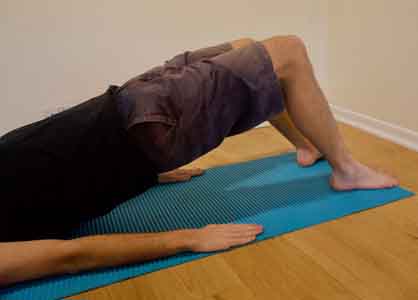
Bridging
Lie on your back with your knees bent and your feet firmly on the ground. Keep your knees together. Raise your bottom as far as you can and hold in there for 10 seconds.
Release and repeat x 5
Bridging and lift one leg out straight
This is a more advanced version of the above.
As before lift the bottom. Now keeping the pelvis steady and do not allow the pelvis to rotate ( this will involve your core muscles to keep the pelvis steady). Now lift one leg out straight keeping the thigh level with the other thigh.
Hold it there for a count of 5 if possible. Then release that leg back into the bent position with the foot on the floor and then do the other leg.
Try and do 5 on each leg
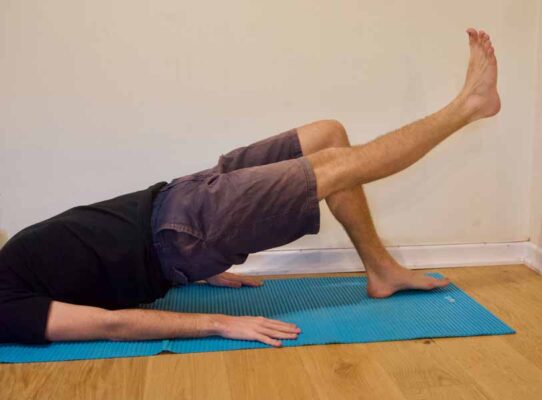
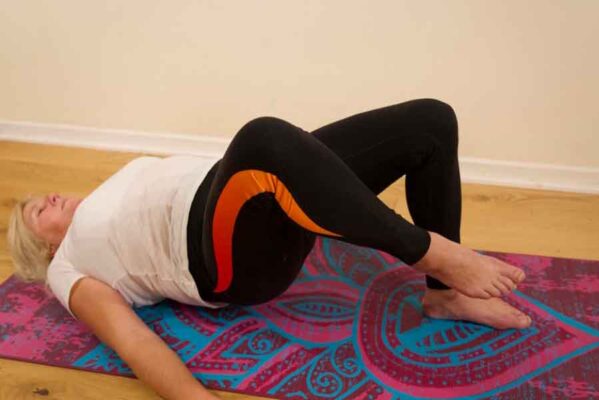
Bridging and then lift bent leg out
As for Bridging- lift up your pelvis. Then keeping the pelvis steady and not allowing it to rotate at all, move one of the bent legs up and out rotating it away from the other leg but with the foot off the floor.
Abdominal curls
As described in the Back exercise section of this website.
Put your hands behind your neck. With your knees bent pull in your tummy. Now curl up the head and shoulders keeping the stomach pulled in at all times.
Repeat x 10
Build up to x 20
Now come up and across trying to get one elbow to move towards the opposite knee x 10
Then the other elbow to the opposite knee
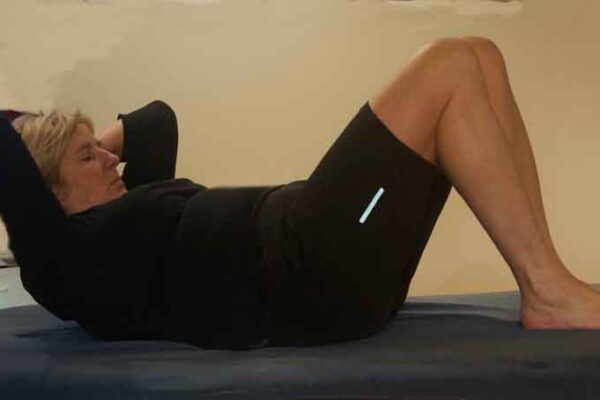
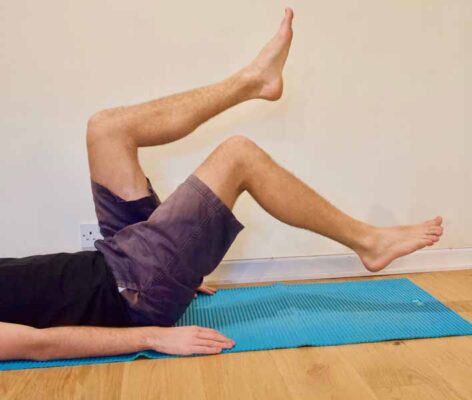
Another Abdominal exercise
Lie on the floor with knees bent and feet resting on the floor. Pull in your stomach and keep it tucked in. Now bend up one knee and then the other towards your chest. Make sure you keep control of your stomach and now straighten out one leg mid air as far as you can with control! Now bring it back in and then do the same with the other leg.
ONLY do one leg at a time. This is NOT bicycling mid air
Clamshell Exercise
Lie on your side with your knees bent.
Keeping your feet together lift the upper leg up and out away from the lower leg. Do not let your pelvis roll back and concentrate on pulling in the stomach and not allowing any rotation of the pelvis.
Repeat x 10 each side
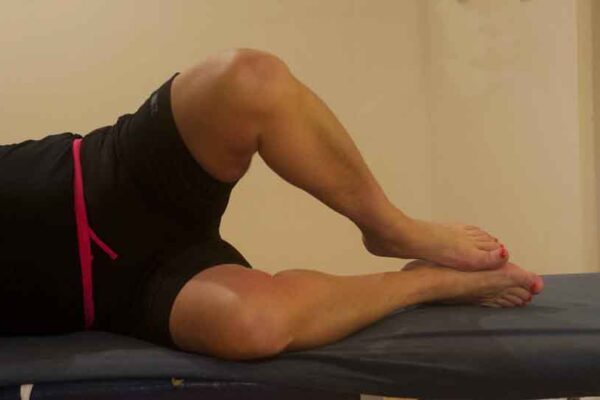
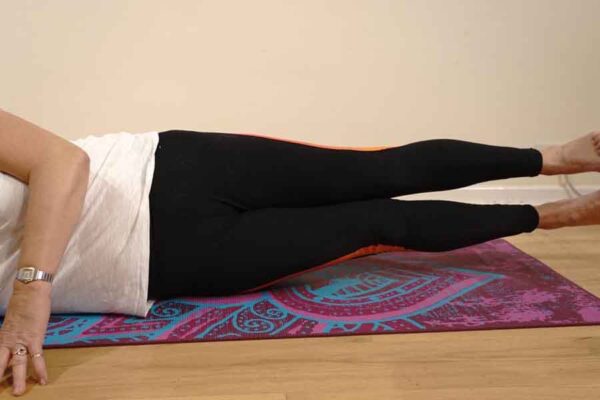
Double leg lift in side lying
Lie on your side with your legs together and just slightly forward so you can see your toes.
Now lift up both legs together supporting yourself with one hand on the floor.
Repeat x 15 each side
The plank is a bodyweight exercise which involves holding the trunk part of your body in a straight line off the ground. The static exercise engages multiple muscle groups at the same time which makes it extremely effective at strengthening your core, whilst also working the shoulders, arms and glutes.
Planks are also an effective safeguard against back pain as they strengthen your core which in turn, can help to alleviate pressure on your back.They are a great addition to any exercise routine as they are equipment-free and quick to perform.
Getting into plank position is relatively simple but the tricky part is maintaining that position for a period of time.
Regularly adding planks to your fitness regime will go some way to conditioning your core, improving your posture and stability.
Plank
Level 1 Plank
- Lie on the floor with your elbows under your shoulders, hands flat on the floor and core engaged.
- Keeping your forearms and knees on the floor slowly raise yourself upwards until your body is in a straight line from your knees to your head.
- Hold the position for as long as you can. Do not worry if you abdominal muscles start shaking. This is a sign that you are working them hard. Try and hold for 30 seconds. Repeat x 3
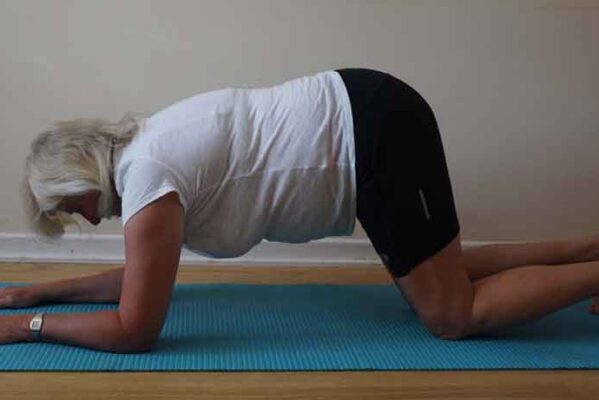
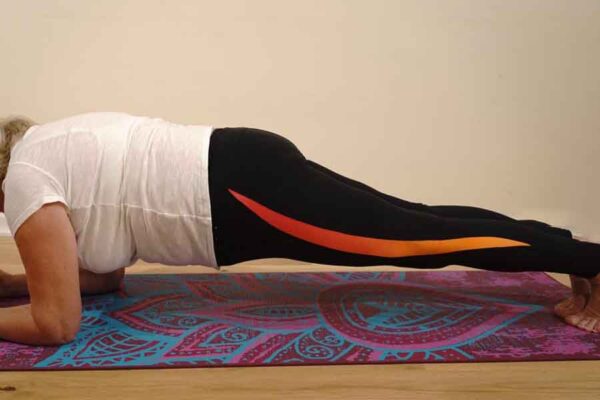
FULL PLANK
Level: Intermediate
- Start in a press-up position.
- Bend your elbows until your forearms are on the floor beneath your shoulders so your body is in a straight line from your feet to your head.
- Keep your abdominals tight and look at the space between your hands to ensure a neutral spine position.
- Hold the position for as long as you can.
- Repeat x 3
Side plank
Level: Intermediate to Advanced.
- Lie on your right side with feet together and forearm beneath your shoulder.
- Engage your core and raise your hips so your body is in a straight line from your feet to your head.
- Hold this position for as long as you can. If you can, aim for 30 seconds.
- Repeat on your left side.
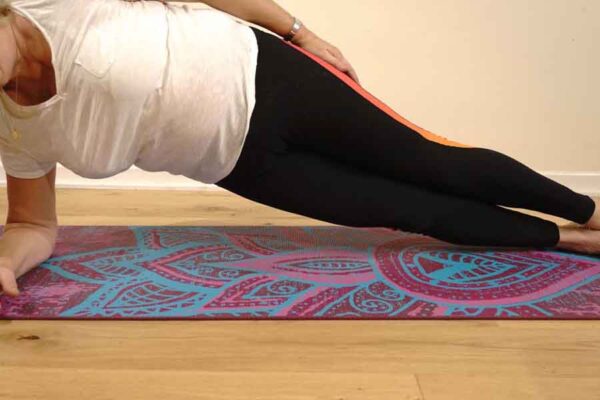
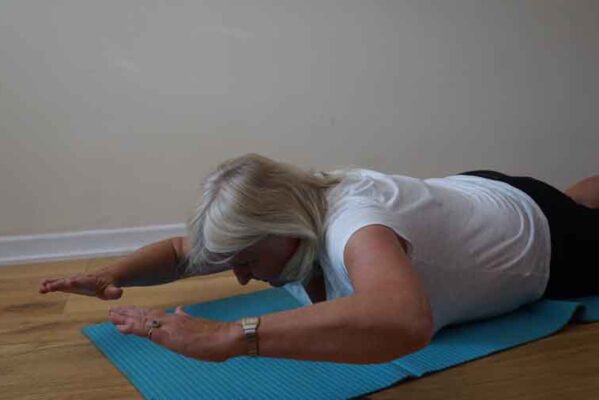
Back extension with arms lifted
Lie on your tummy.Place your hands near your ears.
Lift the upper body off the floor keeping the hands near the ears and shoulder blades pulled back together.
Hold 5 seconds and release. Repeat x 10
If this is too easy slide both arms out mid air forwards and back in and down x 20
Cobra exercise
Lie on your front with your arms by your side.
Lift up your head and shoulders off the floor.
Hold for 5 seconds. Release and repeat x 10
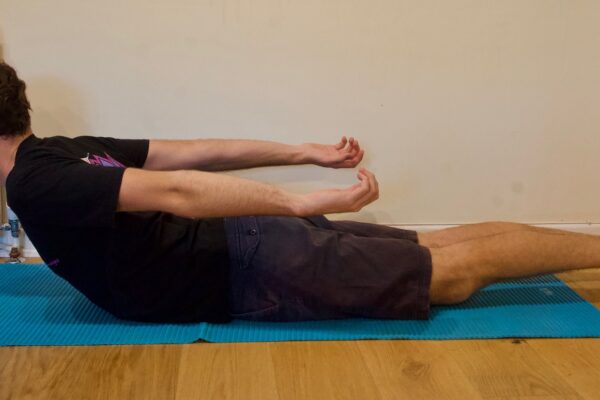
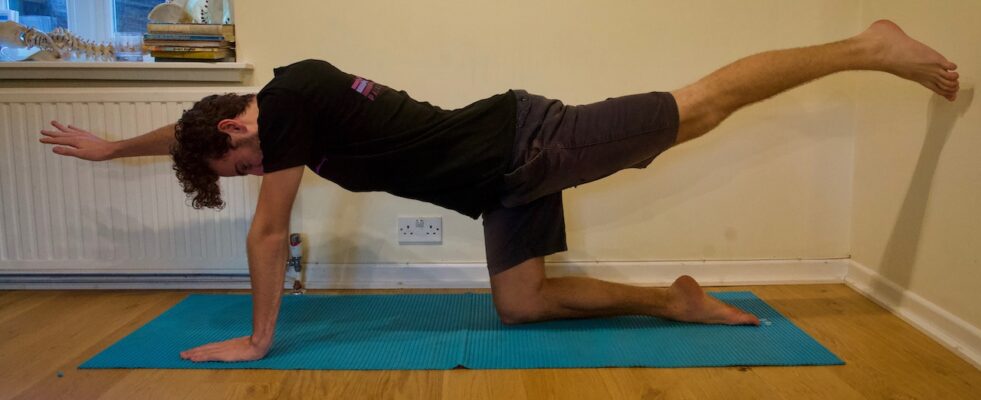
On All Fours
Lift one leg out straight behind you. Hold it there. Now try and lift the opposite arm out straight. Keep your balance and hold for 2-5 seconds.
Swop legs
Repeat x 10
On all Fours single leg lifts out sideways
Starting position is on all fours. Now pull in the tummy to control the pelvis. Now lift one leg up and out controlling the pelvis and not allowing it to twist.
Repeat x 5 each side
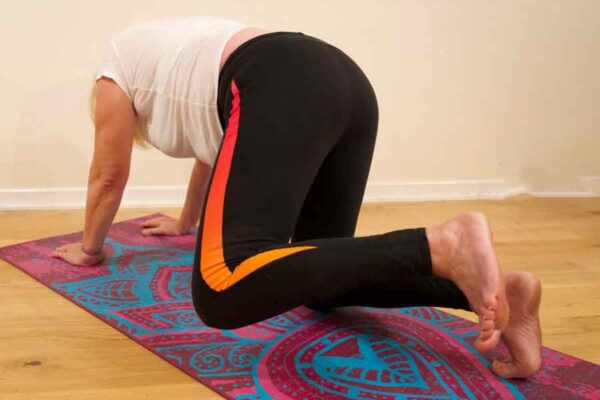
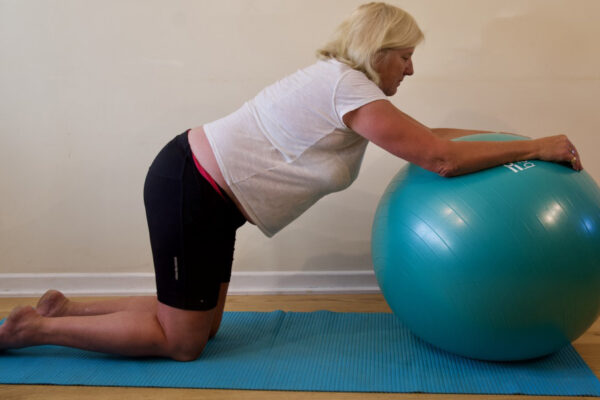
Ball exercises
If you have a large Swiss ball there are a variety of exercises you can do
Ball Rollouts
Kneel down with your forearms and hands resting on the ball.
Roll the ball forwards as far away as you can keeping control and then roll it back in.
Roll Swiss ball side to side
Kneeling as before now roll the ball side to side keeping control of your pelvis.

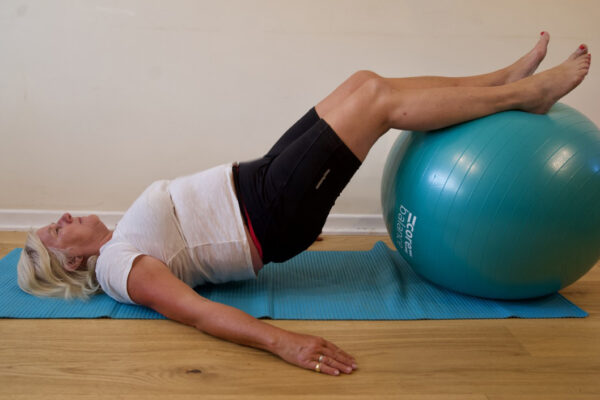
Advanced exercise
Bridging on a ball,
With both calves resting on the ball lift your pelvis off the floor. Hold for 5 seconds.
Lower and repeat 5-10 times
Another advanced exercise
One legged bridging on the ball
With one leg on the ball and the other leg in the air lift up your pelvis.
Change legs and repeat x 5 each side
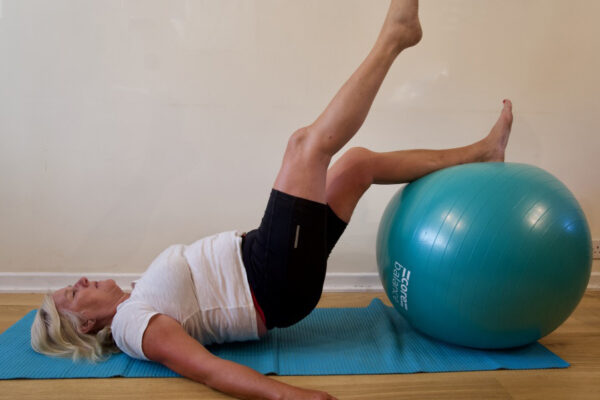
For downloadable pdf click here


Pingback: Degenerative Disc Disease – www.rememberyourbody.com